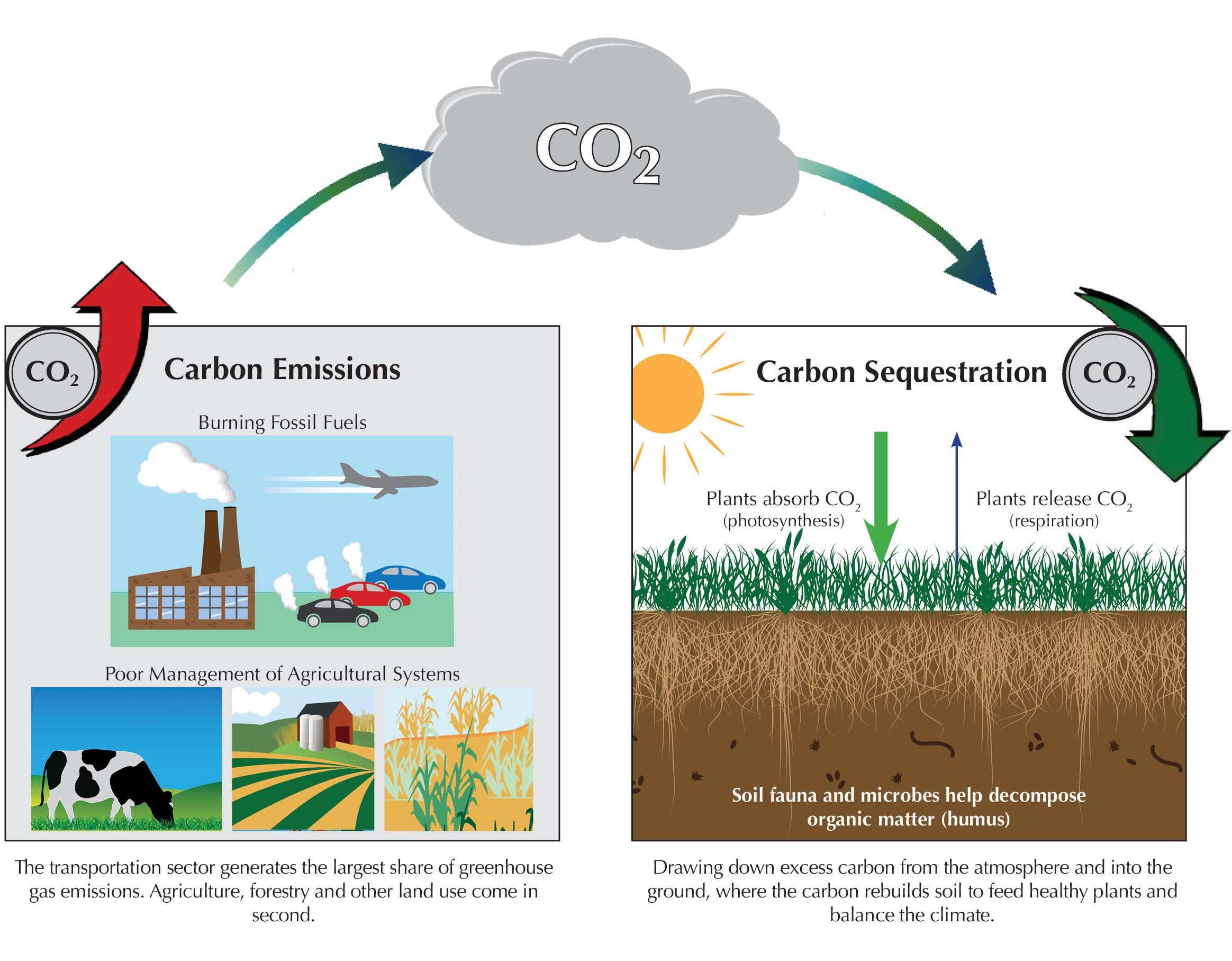“We are extremely excited to get this body of work, which includes nearly a decade of research, into the peer-review process,” says Mark Ritchie, Ph.D., the study’s lead author, former professor at Syracuse University, and currently adjunct professor at Utah State University. “The results presented in this study come from comparing soil carbon measurements six to eight years apart across more than 200 sampling points. Such data are rare, and simply unavailable at the spatial scale of this study.”
According to the study findings, the statistically significant magnitude of increase in soil carbon associated with conducting high-density short-duration (HDSD) grazing practices was slightly higher than that predicted by a relatively simple model that links soil carbon changes to grazing management.
Calculations from this long-term study suggest that improved grazing practices, implemented at a large scale, have removed millions of metric tons of carbon dioxide from the atmosphere and support the issuance of carbon credits to the Northern Kenya Rangelands Carbon Project.
The outcome of this study contrasts with recent published evaluations of some other carbon project types in which carbon credit issuances apparently overestimated avoided emissions. In addition, this study supports further expansion of new nature-based solutions carbon projects to climate change adaptation and mitigation through carbon dioxide removal.
“With the recent negative press about carbon projects, it is important to know that we can justify using predictive models to verify carbon removals in the early stages of a project, and that monitoring of actual removals can provide the basis for corrections, if needed, to more accurately estimate future amounts of carbon credits available for sale (i.e., issuances),” says Timothy Tear, Ph.D., director of the Center for Conservation and Climate Change Research at Biodiversity Research Institute (BRI) and co-author on the study. “There are no shortcuts if you are going to provide the robust evidence needed to adequately show that changes in carbon stocks in any carbon project are the result of project activities.”
The outcomes of this research study support the development of new nature-based carbon projects. CarbonSolve, in partnership with BRI and others, has recently launched a 1.5-million-hectare soil carbon project in the Kajiado District of Kenya’s southern rangelands region.
“We need more carefully constructed studies like this that draw links between project activities and carbon outcomes and are based on solid science,” says David Evers, Ph.D., BRI’s executive director and chief scientist. “In addition, we need similar efforts that demonstrate how these changes in carbon and their associated project activities impact biodiversity.”
This paper is available for review as it undergoes the peer-review process.
# # #
CarbonSolve is a U.S.-based company established to promote the development of carbon projects around the world. CarbonSolve’s niche in the growing carbon market is developing carbon removal projects in grassland and rangeland habitats where grazing and/or fire management are the dominant activities. CarbonSolve’s mission is to restore ecosystems, conserve wildlife, and enhance human socio-economic development through carbon financed land use.
Biodiversity Research Institute’s mission is to assess emerging threats to wildlife and ecosystems through collaborative research, and to use scientific findings to advance environmental awareness and inform decision makers. BRI established its Climate Change Program in early 2021, but over 25 years of study, many of the Institute’s long-term projects across all programs contribute to the ongoing dialogue about climate change and help to inform actions needed to address this global issue.



